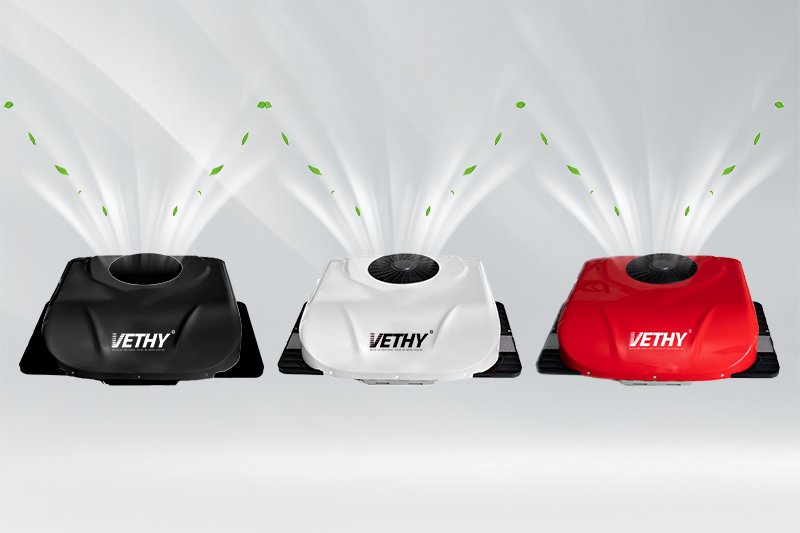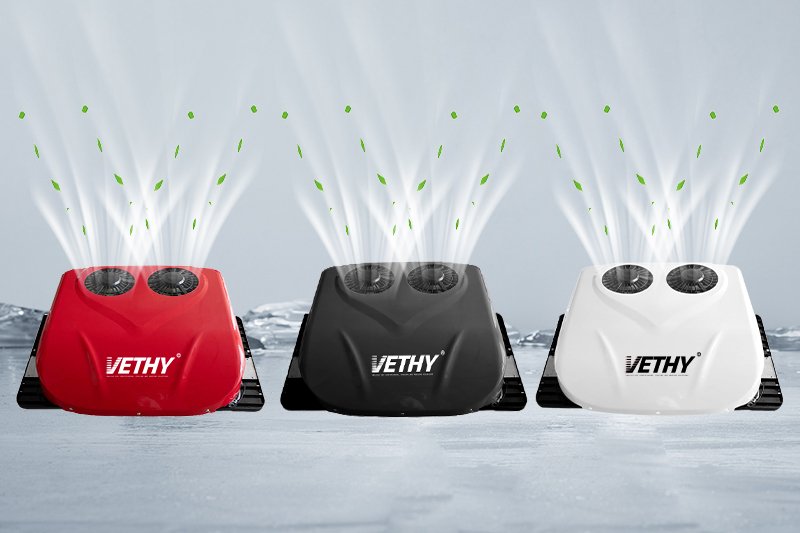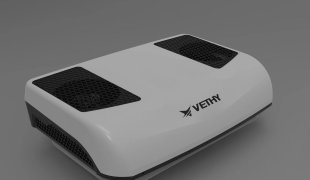How Do I Install a 12v air conditioner for tractor cab
December 20, 2024
Introduction to Parking Air Conditioner Installation
The Importance of Comfort On-the-Go
When traveling, whether on work or for pleasure, comfort comes first. Long-term drivers run the risk of damaging their health, and the last thing you want is to get back into a hot car after a break.
Parking air conditioners (PACs) are useful in this situation. They give you a cool respite from the heat so you can unwind and refuel without using your engine. To maximize its advantages, you must, however, know how to install a PAC in your truck or RV correctly.
Overview of Parking Air Conditioner Benefits
Parking air conditioners improve efficiency and safety in addition to comfort. They ensure that you stay attentive while driving and help prevent heat-related illnesses by keeping the interior of your car cool. PACs are an environmentally friendly option because they can also save fuel usage by doing away with the requirement for engine idle during pauses.
Installation Model Recommendation------Vethy VS01, VS02, VS02 pro
As a senior engineer at Vethy Industries, I am pleased to delve into the complexities of installing parking air conditioners, especially for truck and RV owners who demand both comfort and performance from their vehicles. Our parking air conditioner series, including VS01, VS02 and VS02 Pro, are designed with the unique needs of these vehicles in mind.
Selecting a parking air conditioner that is reliable, energy-efficient, effective, and easily connected with the car's systems is essential when thinking about putting one in a truck or recreational vehicle. These requirements are met by Vethy's parked air conditioners, which offer a cozy atmosphere without sacrificing strength or capacity.
VS01
Our VS01 model is a wonderful model for people who operate construction machinery in hot conditions or work in hot locations. His 24V model is a perfect option for consumers who seek an easy installation because it offers a cooling power of up to 2800W and an uncomplicated installation technique.

VS02
For individuals that require more from their cooling system, the VS02 provides better performance and more functions. Its cutting-edge features, which include energy-saving inverter technology and clever temperature control, guarantee that your car stays cool without using up too much battery life.

VS02-pro
But for RV owners who want the ultimate in comfort and efficiency, the VS02 Pro is the top performer. With its efficient twin-rotor compressor and ultra-quiet operation, it's designed for those who crave the best in quiet parking air conditioning. The VS02 Pro's all-copper damping tubes and Jingma DC brushless motor make it more than just a cooling system, it's a testament to Vethy's commitment to quality and durability.

Our parked air conditioners are easy to install, and we offer thorough assistance and instruction to guarantee a trouble-free installation. Because our units are made to fit a variety of truck and RV models, you can choose to have them professionally installed or install them yourself. Either way, they are a flexible option for any vehicle.
Understanding Your Parking Air Conditioner
Components of a Parking Air Conditioner
Understanding a parking air conditioner's parts is essential before beginning the installation process: The compressor is in charge of the system's total refrigerant circulation. Refrigerant is cooled by the condenser, which converts it from gas to liquid. The air within the car is cooled by the evaporator, which takes up heat from the inside. The expansion valve regulates the flow of refrigerant into the evaporator.
How Parking Air Conditioners Work
The refrigeration cycle, which is used by parking air conditioners, transfers heat from within the car to the outside. In order to remove heat from the cabin air, the compressor pumps refrigerant through the system when it is turned on. When the car is parked, this procedure gives the occupants a cozy interior.
Assessing Your Vehicle's Needs
Determining Compatibility with Your Truck or RV
Before purchasing a PAC, you must determine whether it is compatible with your vehicle. Compatibility factors include:
· Make and Model: Different vehicles have varying specifications that affect installation.
· Electrical System: Ensure your vehicle’s electrical system can support the PAC’s power requirements.
· Space Availability: Assess whether there is enough space for installation without obstructing other functions.
Evaluating Available Space and Installation Options
Consider where you want to install the PAC—either on the roof or in a window. Each option has its own space requirements and installation processes. Measure available space carefully to ensure a proper fit.
Electrical System Compatibility
Checking Battery Capacity and Electrical Load
Parking air conditioners draw power from your vehicle’s battery. Therefore, it’s essential to check your battery capacity and ensure it can handle the additional load:
1. Battery Capacity: Look for amp-hour (Ah) ratings; higher ratings indicate more available energy.
2. Electrical Load: Research the amperage draw of the PAC and compare it with your battery’s output capabilities.
Ensuring Safe Electrical Connections
For both performance and safety, electrical connections must be made correctly. In order to avoid electrical fires or short circuits, be sure that every connection is safe and insulated. Fuse or circuit breakers can be used to give further security.
Physical Installation Considerations
Rooftop vs. Window Mounting
Deciding between rooftop and window mounting will depend on your vehicle type and personal preference:
· Rooftop Units: These units typically provide better airflow and do not obstruct windows but require more installation effort.
· Window Units: Easier to install but may limit visibility and access.
Evaluate which option best suits your needs based on available space and desired functionality.
Structural Integrity and Weight Distribution
When installing a rooftop unit, consider the structural integrity of your vehicle's roof. Ensure it can support the weight of the PAC without compromising safety or stability. Proper weight distribution is essential for maintaining handling characteristics while driving.
Preparing for Installation
Gathering Necessary Tools and Materials
Before beginning installation, gather all necessary tools and materials:
· Tools: Drill, screwdriver, wrenches, measuring tape, level
· Materials: Mounting brackets, screws, seals, duct tape
· Safety Gear: Gloves, goggles, protective clothing
Having everything ready will streamline the installation process.
Creating a Safe Workspace
Ensure that you have a clean, organized workspace free from distractions. If working on a rooftop, use appropriate safety measures such as harnesses or ladders to prevent accidents.
Step-by-Step Installation Process
Rooftop Installation Procedure
Installing a rooftop PAC involves several steps:
Measuring and Marking
1. Measure the dimensions of your PAC against available roof space.
2. Mark where you will drill holes for mounting brackets.
Drilling and Attaching Brackets
1. Use a drill to create holes for brackets according to manufacturer instructions.
2. Securely attach brackets using screws provided with your PAC.
Securing the Air Conditioner Unit
1. Lift the PAC onto the brackets.
2. Secure it in place according to manufacturer guidelines—ensure it is tightly fastened.
Window Installation Procedure
For window-mounted units:
Selecting the Appropriate Window
1. Choose a window that allows easy access while minimizing obstruction.
2. Ensure that it is compatible with window-mounted AC units.
Removing the Window Glass
1. Carefully remove any window glass if necessary; follow manufacturer instructions.
2. Clean any debris from around the window frame.
Installing the AC Unit and Sealing
1. Insert the PAC into the window frame.
2. Seal around edges with weather stripping or duct tape to prevent air leaks.
Connecting to Power Source
Wiring the Air Conditioner to the Battery
Follow these steps to connect your PAC to your vehicle's battery:
1. Disconnect negative terminal first before wiring.
2. Connect positive terminal of PAC wiring harness directly to battery positive terminal.
3. Reconnect negative terminal after ensuring all connections are secure.
Using an Inverter for Alternative Power
If using an inverter:
1. Connect inverter directly to battery following manufacturer instructions.
2. Plug in PAC power cord into inverter outlet—ensure inverter capacity meets PAC requirements!
Ensuring Proper Ventilation
Ductwork Installation and Airflow Management
If required by your unit design:
1. Install ductwork according to manufacturer specifications.
2. Ensure ducts are sealed tightly at all connections—this prevents airflow loss!
Checking for Leaks and Ensuring Efficiency
After installation:
1. Inspect all connections for leaks; use duct tape where necessary!
2. Test airflow through ducts—make adjustments as needed!
Testing the System
Turning On the Air Conditioner for the First Time
Once everything is connected:
1. Start your vehicle (if applicable) or turn on inverter power supply.
2. Activate PAC controls—monitor operation closely during initial testing!
Monitoring Performance and Making Adjustments
Ensure optimal performance by checking:
1. Air temperature output—should be cool within minutes!
2. Listen for unusual noises indicating potential issues!
Maintenance and Troubleshooting
Post-Installation Maintenance Tips
To keep your PAC running smoothly:
1. Clean filters regularly per manufacturer recommendations!
2. Check refrigerant levels periodically—top off as needed!
Common Issues and Their Solutions
Be aware of potential issues such as:
1. Reduced cooling efficiency—check filters/ductwork for blockages!
2. Unusual noises—inspect mounting hardware/connections!
Safety Precautions During Installation
Electrical Safety and Fire Hazards
Always prioritize safety when working with electrical components! Follow these guidelines:
1. Use insulated tools when handling wires!
2. Avoid overloading circuits—use fuses appropriately!
Structural Safety and Vehicle Stability
When working on rooftops or under vehicles:
1. Use appropriate ladders/harnesses!
2. Ensure stability before climbing onto roofs!
The Role of Professional Installation
Benefits of Hiring Professionals
While DIY installations can be rewarding:
1. Professionals ensure proper installation techniques!
2. They often provide warranties/guarantees on work done!
Finding a Reputable Installer
Look for installers who specialize in parking air conditioners! Check reviews/testimonials before hiring anyone!
DIY vs Professional Installation
Assessing Your Technical Skills
Consider whether you have experience with similar installations! If unsure—professional help may be best choice!
Deciding on the Right Approach for You
Ultimately—it’s about comfort level with tools/techniques involved! Choose what feels right based upon skills/experience!
Cost Considerations for Installation
Budgeting for Materials and Tools
When planning budget—consider costs associated with both materials/tools needed! Factor in potential professional fees if hiring out work too!
Professional Installation Fees
Get estimates from multiple installers before committing! Compare prices/services offered carefully!
Energy Efficiency and Operational Costs
Understanding Power Consumption
Know how much energy each type consumes during operation! This impacts overall operational costs significantly over time!
Maximizing Efficiency and Saving on Energy Bills
Choose energy-efficient models whenever possible! Look out features like programmable timers/variable speed compressors designed optimize usage effectively over time!
Environmental Impact of Parking Air Conditioners
Choosing Eco-Friendly Models
Consider environmental impact when selecting new equipment! Look specifically at low-GWP refrigerants used within chosen systems!
Reducing Carbon Footprint and Energy Waste
Investments made today yield returns tomorrow; prioritize sustainable choices whenever feasible moving forward together united purposefully toward shared goals achieved collectively ahead onward brighter futures await us all eagerly anticipating journey undertaken together ahead onward brighter futures await us all eagerly anticipating





